Japan, with its mountainous landscapes and diverse climate, offers a unique experience for snow lovers. Each region of the country has distinct characteristics, ranging from harsh winters with intense snowfall to milder climates with sporadic snow. Understanding the snow calendar in each region not only helps tourists plan their trips but also reveals the cultural richness associated with this natural phenomenon. In this article, we will explore the Japanese regions where snow is most prominent and the period during which it occurs, highlighting the most famous destinations and related activities.
In addition to providing an incredible visual spectacle, snow in Japan has a great impact on tourism, especially in winter. From the ski slopes in Hokkaido to the onsen surrounded by snow in Nagano, the snow season is eagerly awaited by locals and visitors alike. Discover below when and where the magic of snow occurs in Japan.
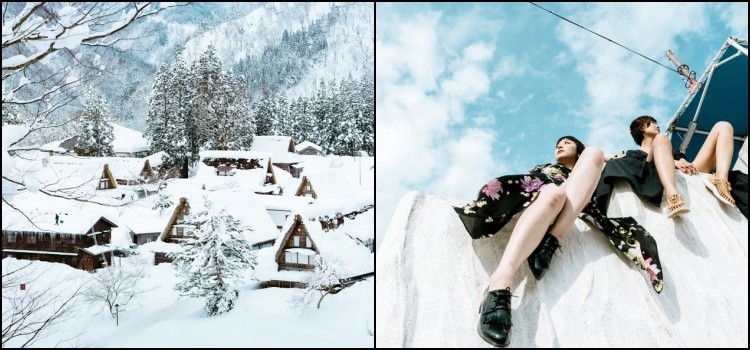
Table of Content
How do you say Snow in Japanese?
In the Japanese language, the word for snow is yuki (雪). This snow, when it falls softly like powder, is valued for its lightness and softness, characteristics that make it one of the most delicate in the world. For ice, the term used is koori (氷).
In addition, there are other expressions to describe phenomena related to snow. For example, kousetsu (降雪) specifically refers to snowfall, while the English word "snow" is also used in Japanese, written as スノー.
If we want to talk about a snowstorm or blizzard, we use the term fubuki (吹雪). For fresh or recently fallen snow, the appropriate word is shinsetsu (新雪), which captures the purity and renewal brought by the newly formed white blanket.
We recommend reading: Seasons, Weather, and Climate in Japanese: Learn Key Vocabulary
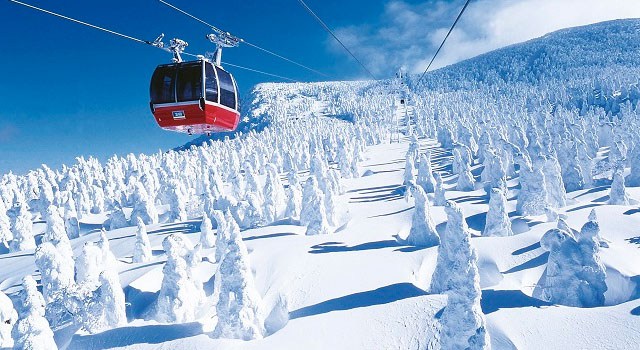
When does it start to snow in Japan?
Snow in Japan typically occurs between late November and early March, depending on the region. The country has a varied climate, with notable differences between the north, where winters are harsher, and the south, where snow is rare. Below, we detail the main regions where it is possible to enjoy this phenomenon:
Hokkaido: The snow capital of Japan
Hokkaido, the northernmost island of Japan, is known for its harsh and long winters, with snow beginning as early as the end of October and lasting until early April. Cities like Sapporo and Niseko are world-renowned for their ski resorts and winter events.
- Snow calendar:
- October: First flakes in the mountainous areas.
- November to February: Abundant snow, ideal for winter sports.
- March: Snow begins to melt, but there are still conditions for skiing.
- Main attractions:
- Sapporo Snow Festival: Held in February, with impressive ice sculptures.
- Skiing in Niseko: Considered one of the best ski areas in the world.
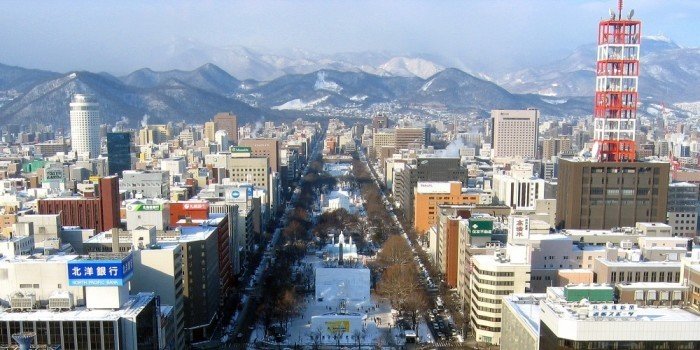
Tohoku Region: Tradition and nature under the snow
Located to the north of the main island of Honshu, Tohoku is another region where snow is predominant. Here, winter begins in December and intensifies in January and February. The Zao mountains and outdoor onsens, such as Nyuto Onsen, offer unforgettable experiences.
- Snow calendar:
- December: Start of the season, with progressive accumulation.
- January to February: Snow peak, with extremely low temperatures.
- March: Snow declining, but still visible in mountainous areas.
- Main attractions:
- Snow monsters in Zao: Trees covered in snow that create unique shapes.
- Winter festivals: Like the Kamakura Festival in Akita, with illuminated snow houses.
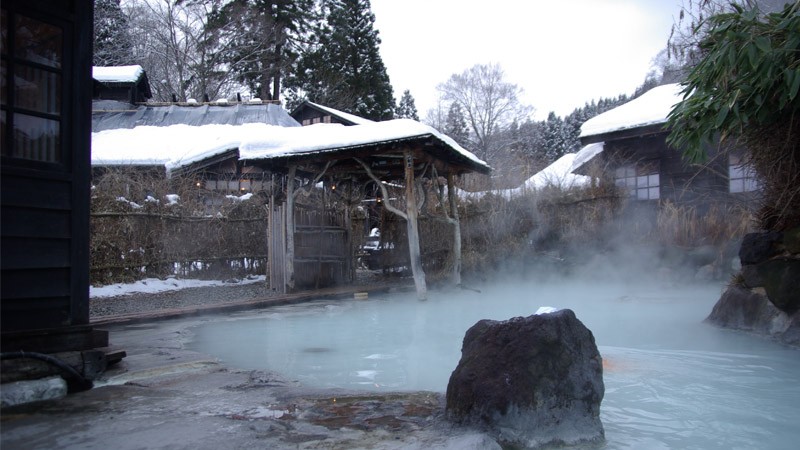
Chubu Region: Where the mountains dominate
In the center of Japan, Chubu is famous for its imposing mountains and snowy landscapes. The areas of Nagano and Takayama stand out, with winter starting in December and extending until March.
- Snow calendar:
- December: Moderate snow in elevated areas.
- January and February: Ideal conditions for winter sports and tourism.
- March: End of the season, but with persistent snow in the mountains.
- Main attractions:
- Shirakawa-go Village: Known for its traditional houses covered in snow.
- Hakuba ski resorts: One of the most popular places for international skiers.
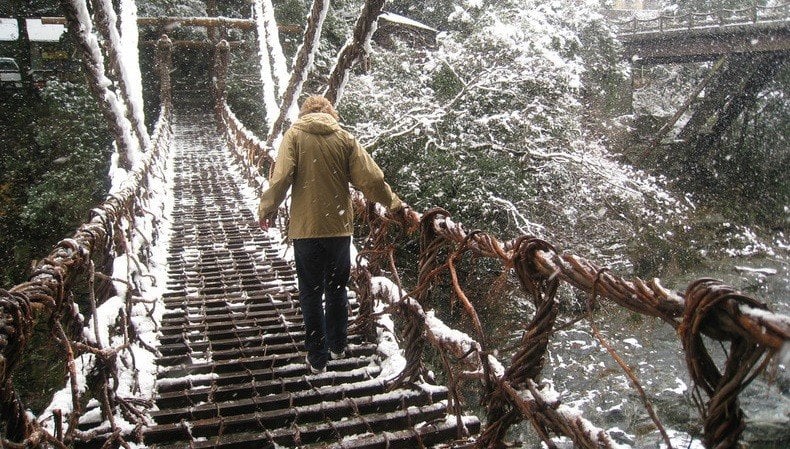
Where does it not snow in Japan?
Although Japan is widely associated with snow-covered landscapes during winter, there are regions where snow is extremely rare or nonexistent. These areas are located in the far south of the country, where a subtropical climate prevails. Some of the main examples include:
- Okinawa: Known for its paradise-like beaches and tropical climate, Okinawa hardly ever records snow. During the winter, temperatures rarely drop below 15°C, making the area a destination for those looking to escape the cold.
- Kyushu (coastal areas): Although some mountainous regions of Kyushu may see light snow, coastal areas like Fukuoka and Kagoshima have mild winters with little to no snow.
- Shikoku (low areas): Similar to Kyushu, the low areas of Shikoku experience milder winters, and snow is a rare event.
- Smaller islands: Small islands south of Kyushu and Shikoku, such as Amami Oshima, share the mild climate of Okinawa and almost never receive snow.
Although the south of Japan, including Kyushu and Shikoku, receives little snow, there are exceptions in mountainous areas. Mount Aso, in Kyushu, can have light snow in January and February, but it is not common to find large accumulations. In these regions, winter is milder, and snow, when it occurs, is a reason for celebration.
- Kyushu and Shikoku:
- Late start, usually in January.
- Light and fleeting snow.
- Incredible landscapes when there is snow, especially in contrast with the tropical areas of the south.
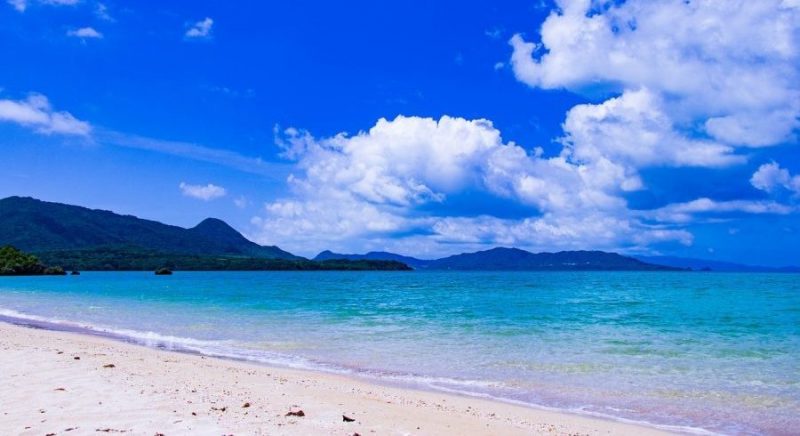
What is the best month to see snow in Japan?
Snow in Japan is a magical time of year. From December to February, the country is covered in winter. For those who have never experienced the beauty of snow in Japan, it's an experience they won't soon forget.
When it comes to snow in Japan, the most popular months are December, January and February. During these months, snowfall is most common, although snow can still occur during the other winter months.
Generally speaking, snowfall is most abundant in Hokkaido, Japan's northernmost prefecture, located in the north of the country.
No matter where you are in Japan, the best time to see snow is usually in January or February. This is when the blizzard is the most consistent and the snow accumulates the most.

What to do in Japan Snow?
When it comes to snow, Japan has a wide range of activities to enjoy. Skiing, snowboarding and snowshoeing are some of the most popular activities, but there are also many other activities that are popular in the winter months. Some of these activities include snow tubing, sledding, ice skating and snowmobiling.
Whether you're looking for a romantic winter getaway or just want to experience the beauty of Japan's snow, these months are the perfect time to visit. With the cool temperatures and beautiful snow, you are sure to make some unforgettable memories.
The cool temperature is perfect for visiting onsen and bathhouses frequently. Another thing you can enjoy in winter in Japan is the end-of-year lighting.
We recommend reading: Find out where to ski and snowboard in Japan
Wrapping Up
The snow season in Japan is a fascinating experience, varying widely by region. While Hokkaido and Tohoku are ideal destinations for winter sports enthusiasts and snow festivals, other areas like Chubu offer unique combinations of culture and landscapes. Plan your trip according to the calendar of each region and make the most of what Japanese winter has to offer. Whether for skiing, relaxing in an onsen, or exploring snow-covered villages, Japan is an unforgettable winter destination.
